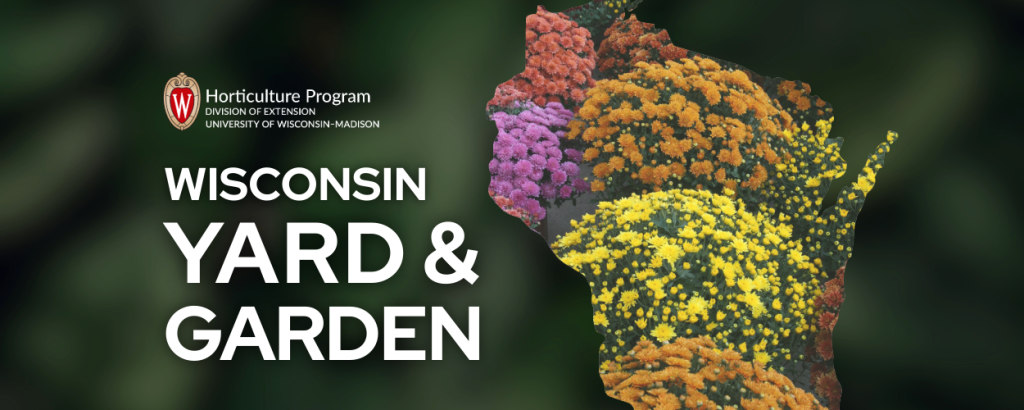
Chrysanthemums, better known as mums for short, are the traditional flowers to provide color to porches, decks, and home landscapes each autumn. Garden centers throughout Wisconsin typically have a wide variety of mums ready to bring home and add instant color. You can also grow mums in landscapes to provide fall color every year.
The reason chrysanthemums put on dependable floral displays about the same time each fall is they are short-day plants. As days get shorter through summer, increasing darkness each night triggers processes within mums to initiate flowering. In commercial plant nurseries, potted mums are kept bushy and full of blooms through timely maintenance, including pinching stems and manipulating daylength with greenhouse lighting.
Numerous types of mums exist, varying in flower style, color, plant size, and timing of bloom. Potted mums blooming (or ready to bloom) purchased now are most often used as annuals. Trying to establish them out in the yard and survive the upcoming winter is difficult. Mums have shallow fibrous root systems that may freeze and be damaged over winter. In addition, potted mums purchased this fall have put so much energy into blooming they are unlikely to develop many roots prior to winter setting in.
When considering adding mums as more permanent additions to the home landscape, spring is ideal timing for planting. Early-season hardy garden mums, as the name implies, bloom earlier than late-season mums and are the best choice for planting in landscapes throughout Wisconsin, so they bloom prior to hard freezes. Choose an area in full sun, or a minimum of six hours of sunlight each day. Soils should be well-drained, as a common reason mums fail is wet soil, especially in winter. Adding organic matter to the soil, including compost, well-rotted manure, or peat, is suggested, especially on soils higher in clay or sand.
Mums growing in the landscape require more attention than most perennials. Make sure they are watered throughout the season to avoid drought stress. Fertilize mums on a regular basis in the first half of the growing season, such as with soluble complete fertilizer mixed in water. The practice with the biggest impact on blooming is pinching, either using your fingers or shears. Pinch back mums after they get at least six inches tall in spring and repeat one or two times before July. The result is shorter, bushier plants loaded with more blooms.
After blooming in fall, leave foliage standing through winter. Mums significantly benefit from winter mulching to help survive Wisconsin winters.

About the Author
Bruce Spangenberg is a Horticulture Outreach Specialist with UW-Madison Division of Extension. Get answers to your lawn, landscape and garden questions anytime at “Ask Your Gardening Question.”




